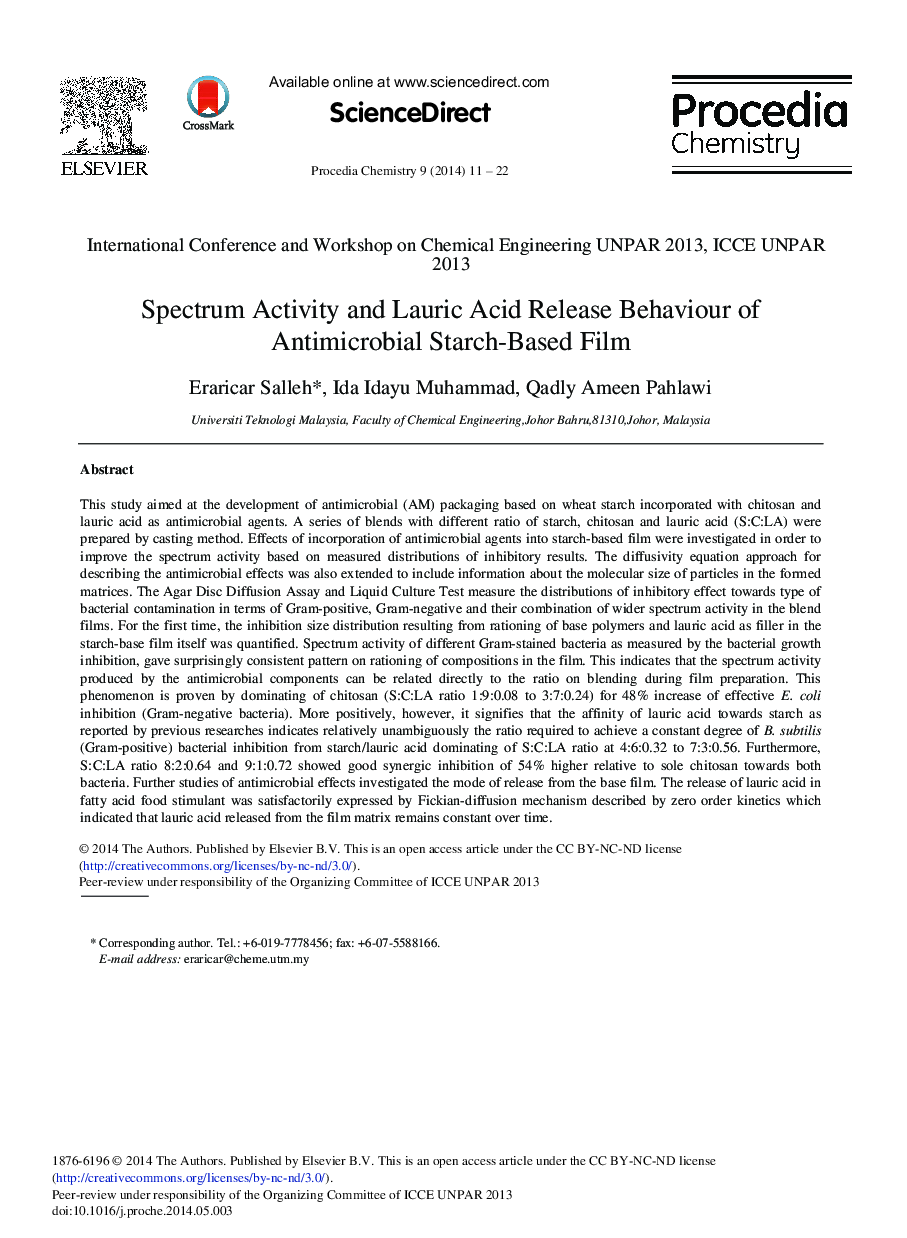| Article ID | Journal | Published Year | Pages | File Type |
|---|---|---|---|---|
| 240011 | Procedia Chemistry | 2014 | 12 Pages |
This study aimed at the development of antimicrobial (AM) packaging based on wheat starch incorporated with chitosan and lauric acid as antimicrobial agents. A series of blends with different ratio of starch, chitosan and lauric acid (S:C:LA) were prepared by casting method. Effects of incorporation of antimicrobial agents into starch-based film were investigated in order to improve the spectrum activity based on measured distributions of inhibitory results. The diffusivity equation approach for describing the antimicrobial effects was also extended to include information about the molecular size of particles in the formed matrices. The Agar Disc Diffusion Assay and Liquid Culture Test measure the distributions of inhibitory effect towards type of bacterial contamination in terms of Gram-positive, Gram-negative and their combination of wider spectrum activity in the blend films. For the first time, the inhibition size distribution resulting from rationing of base polymers and lauric acid as filler in the starch-base film itself was quantified. Spectrum activity of different Gram-stained bacteria as measured by the bacterial growth inhibition, gave surprisingly consistent pattern on rationing of compositions in the film. This indicates that the spectrum activity produced by the antimicrobial components can be related directly to the ratio on blending during film preparation. This phenomenon is proven by dominating of chitosan (S:C:LA ratio 1:9:0.08 to 3:7:0.24) for 48% increase of effective E. coli inhibition (Gram-negative bacteria). More positively, however, it signifies that the affinity of lauric acid towards starch as reported by previous researches indicates relatively unambiguously the ratio required to achieve a constant degree of B. subtilis (Gram-positive) bacterial inhibition from starch/lauric acid dominating of S:C:LA ratio at 4:6:0.32 to 7:3:0.56. Furthermore, S:C:LA ratio 8:2:0.64 and 9:1:0.72 showed good synergic inhibition of 54% higher relative to sole chitosan towards both bacteria. Further studies of antimicrobial effects investigated the mode of release from the base film. The release of lauric acid in fatty acid food stimulant was satisfactorily expressed by Fickian-diffusion mechanism described by zero order kinetics which indicated that lauric acid released from the film matrix remains constant over time.
